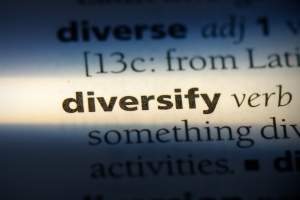 Investing in familiar names may bring a sense of comfort but by focusing too heavily on the Australian market, investors may limit their opportunity set and forgo the benefits of greater diversification.
Investing in familiar names may bring a sense of comfort but by focusing too heavily on the Australian market, investors may limit their opportunity set and forgo the benefits of greater diversification.
With the recent surge in global market volatility, many investors may be wondering whether investing internationally is still a good idea.
When it comes to confronting global challenges, no country is an island (not even Australia). Globalisation may be on the back foot, but for investors this only underscores the importance of international diversification and the need to overcome home bias.
Overcoming home country bias
Ease of access to the Australian market and the avoidance of currency risk make domestic shares an attractive option to Australian investors. And let’s not forget the franking credits, which offer a nice tax advantage.
Investing in familiar names may bring a sense of comfort but by focusing too heavily on the Australian market, investors limit their opportunity set and forgo the benefits of greater diversification.
This isn’t just an issue for Australian investors. Even in the United States, investors are well advised to diversify. Not all the opportunities are to be found in one country, and not every country is free of economic or market risk.
A high allocation to a single country creates concentration risk. It means investors are likely to do well when the domestic economy is strong but are more vulnerable to domestic events—whether bushfires and floods, or inflation and interest rate rises.
As the 2022 Vanguard Economic and Market Outlook points out, the recent divergence in global economic momentum reinforces the benefit of diversification. While some events like a global pandemic or supply chain shocks affect the whole globe, there will always be variability across countries and regions.
Differences in sector composition, the state of economic recovery, monetary and fiscal policy, and currency effects all contribute towards variety in the drivers of investment returns.
How ETFs can help you diversify
While diversification doesn’t protect your portfolio against the possibility of negative returns, it can reduce your potential losses if the market does head south.
Diversification starts by investing across different asset classes, but it also includes diversifying broadly within each asset class by investing in a range of different companies and industries.
Both developed and emerging markets are potential sources of diversification for Australian investors. While the COVID pandemic hit emerging markets especially hard, lower relative valuations and the anticipation of increased global demand have made them attractive to many investors.
And it’s not just international share markets that can help investors diversify. Exposure to hedged international bonds can also help offset some risk specific to the Australian fixed income market.
This need to gain broad exposure across asset classes is also driving demand for diversified funds, which are becoming a popular way to gain instant, broad market exposure within portfolios.
Since their debut in November 2017, Vanguard has seen significant growth in our diversified ETFs, which now have a combined $3 billion in funds. Our diversified range include four funds covering conservative, balanced, growth and high growth risk profiles. They offer a sophisticated all-in-one investment with a simple structure and low cost.
Diversified asset allocation
A single trade gives investors exposure to local and international securities, including thousands of individual bonds and equities.
Gaining access to world markets expands your opportunity set by investing in companies large and small across developed and emerging markets.
We can’t control how markets behave. But by setting a clear plan, diversifying across multiple asset classes, and minimising costs, we can stay in control of what matters: our long-term investment strategy.
To talk over your investment goals and strategy, book a time to chat here, and we’ll discuss what’s best for you.
Source: Vanguard Australia
